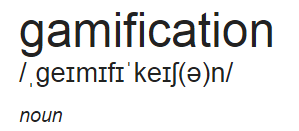 According to the British Council on his report on World Class and How global learning can improve schools (2015), global learning can be of significant benefit to school communities. They found engaging in international activities within the curriculum motivates learners by adding relevance and dynamism to lessons, helps young people of all ages to develop an appreciation of cultural diversity, reinforces the value of learning a language and allows learners to enjoy a better understanding of the world. These experiences prepare young people to play a positive role in society.
According to the British Council on his report on World Class and How global learning can improve schools (2015), global learning can be of significant benefit to school communities. They found engaging in international activities within the curriculum motivates learners by adding relevance and dynamism to lessons, helps young people of all ages to develop an appreciation of cultural diversity, reinforces the value of learning a language and allows learners to enjoy a better understanding of the world. These experiences prepare young people to play a positive role in society.
These questions help us think why we should be including global projects in our classes:
- Why are these global collaborations important?
- Why do I want my students to use new and emerging technology tools to communicate with students around the world?
- How is this relevant to the curriculum? How does this help with student achievement?
What’s a global project?
Let us first define what global projects are. In short, they involve collaboration between classrooms or individuals in different global locations to exchange thoughts and perceptions by undertaking different tasks to apply, illustrate, or supplement classroom lessons, integrating different new technology tools.
When working in global projects, learners must research to try to answer questions about a theme or topic creating collaboratively a final product that later is shared with others on line.
Why global projects are helpful in the classroom?
For students some of the benefits could be:
- Experiencing cross-cultural connections and friendships,
- Addressing global issues through online collaboration,
- Developing leadership and technology skills.
- Getting motivated,
- Reinforcing the value of learning a language
- Preparing learners to play a positive role in society.
For Teachers, the benefits are the following:
- Improving professional learning and growth through collaboration with colleagues in other countries,
- sharing of expertise and discovery of innovative and inspirational practices from around the world
- Adding relevance and dynamism to lessons.
When participating on global projects, Rosenthal(2015) points out that both teachers and student become globally aware and understand that global literacy is part of BEING literate today. She goes on indicating, the need for teachers to be connected by strategically building, nurturing, growing and maintaining Personal Learning Networks across the globe with the ability to access, “search”, “curate” information and crowdsource their network with the mindset and skillset to amplify teaching and learning by reaching out and collaborating with other cultures, people and languages. Finally, teachers needs to be engaged by giving as much as they are taking from their connections by being flexible, innovative and willing to take risks by contributing to the conversations their expertise, perspectives, shareable content and time with the understanding that sharing is a moral imperative in a global network of educators and learner.
Before starting a global project, ask yourself:
- What standards do you need to meet with this project?
- What would you like students to understand?
- What are your essential questions?
- What kind of authentic task can you design for your students to demonstrate their understanding?
- What supporting activities or tasks need to be completed to help your students construct their understanding?
My Face for peace: an EFL global project
Project Title: My Face for Peace
Subject Areas: Social Studies, Language Classes, Global Studies
Collaborators: My Face for Peace, people around the globe
Project Summary: Students share photos with their faces and messages promoting peace. Through sharing photos in social networks with the world, writing and reading each other’s messages, students learn about empathy, culture of peace, connectness, global issues, digital literacy, how language use promote peace, and exercise critical thinking. They discuss how world events impact the life in our countries.
Teacher Reflection: “Students will be able to experience how we all are part of the world and connect through the use of language and social networks by seeing other points of view on peace and build up a culture of peace to have better relationships with others. Through asking questions and discussing them with their peers, contributing to spread messages of peace they will have tolerance to accept the other.” – Doris, Venezuela - EFL Professor
References
World Class How Global Thinking can improve your school [PDF]. (2015). British Council.
Rosenthal Tolisano, S. (2015, December 10). What are the Best Ways for a Teacher to Engage their Classroom in a Global Conversation? [Web log post]. Retrieved March 23, 2017, from http://langwitches.org/blog/2015/12/10/what-are-the-best-ways-for-a-teacher-to-engage-their-classroom-in-a-global-conversation/ 



